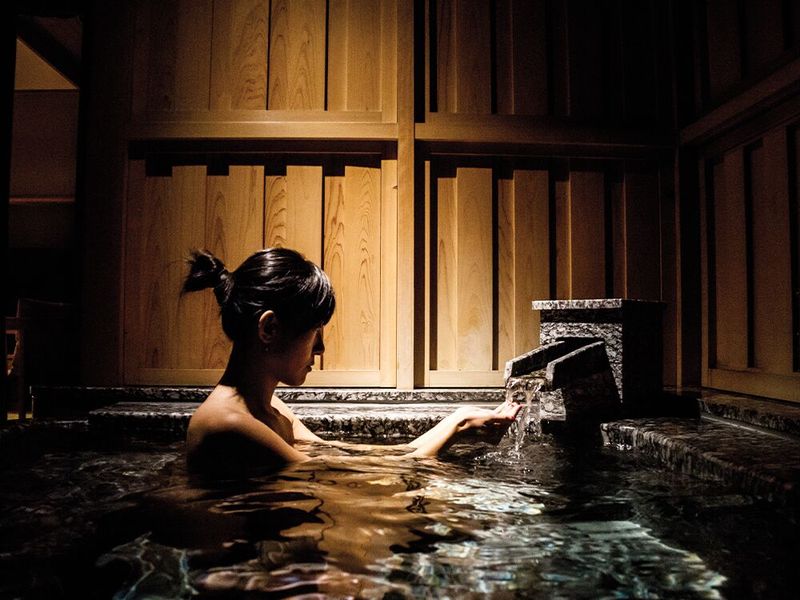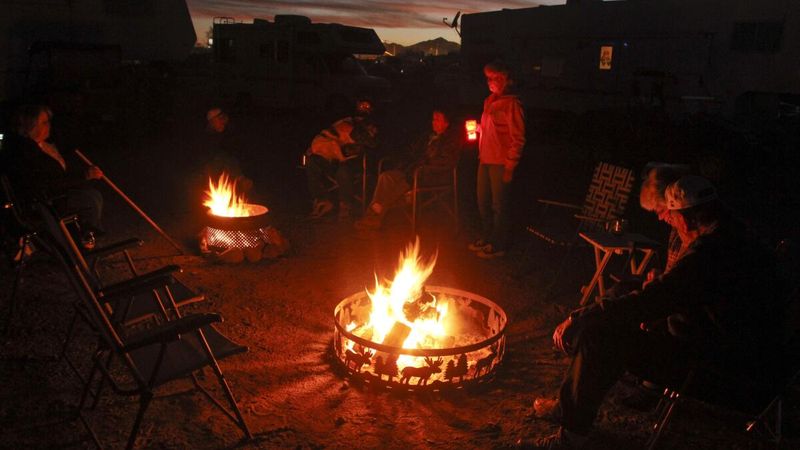Our fast-paced modern world often disconnects us from the simple wisdom our ancestors practiced daily. Old traditions aren’t just relics of the past – they’re practical tools that can bring balance, meaning, and joy to our hectic lives.
By incorporating these time-tested rituals into your routine, you’ll discover a renewed sense of purpose and connection that technology simply can’t replace.
1. Morning Sun Salutation
Greeting the day with gentle stretches toward the rising sun energizes both body and spirit before the day’s demands begin. This ancient Indian practice awakens your muscles while filling your lungs with fresh morning air.
The movements create a natural flow of energy through your body, chasing away sleep and preparing you for whatever lies ahead. Many practitioners report improved mood and focus throughout the day.
You don’t need fancy equipment or expert flexibility—just a few minutes of intentional movement as the world awakens around you. This simple ritual transforms ordinary mornings into mindful beginnings.
2. Drinking Herbal Tea at Sunset
As daylight fades, cultures worldwide pause to brew fragrant herbs into soothing teas. This ritual marks the transition between day and evening, creating a natural boundary that signals your body to downshift.
The warmth spreading through your hands and the aromatic steam rising from your cup engage multiple senses, anchoring you to the present moment. Chamomile soothes frazzled nerves while mint refreshes a tired mind.
Stepping away from screens to prepare tea forces a mental reset. This small act of self-care, practiced consistently, trains your nervous system to release the day’s tensions and prepare for restful evening hours.
3. Lighting a Candle with Intention
Striking a match and watching the flame catch holds a certain magic that electric lights can’t replicate. European households once used this daily necessity as a moment for reflection, prayer, or setting intentions.
The simple act transforms when paired with purpose—perhaps lighting a candle for someone you’re thinking of, to mark the start of a creative session, or to honor a personal goal. The dancing flame becomes a focal point for meditation.
Unlike the harsh blue light of screens, candlelight bathes spaces in a warm glow that signals to our ancient brains that it’s time for connection and winding down. This small ritual brings presence to ordinary moments.
4. Walking After Meals (Passeggiata)
Italians have long understood what modern science confirms—a gentle stroll after eating aids digestion and lifts spirits. The passeggiata isn’t about exercise but about savoring the evening with neighbors and family.
Moving your body after a meal helps regulate blood sugar and prevents that sluggish feeling that often follows eating. Fresh air clears the mind while gentle movement helps food travel through your digestive system more efficiently.
Beyond physical benefits, this tradition creates natural opportunities for connection. Conversations flow more easily while walking side by side than when facing each other across a table. Children run ahead while elders share wisdom—community happens naturally.
5. Thankfulness Before Eating
Pausing before the first bite creates a moment of awareness that transforms eating from automatic to intentional. This practice spans cultures and religions, reminding us that food connects us to earth, farmers, and each other.
The pause needn’t be religious—simply acknowledging the journey of your meal from soil to plate heightens appreciation. Children who practice gratitude before meals develop awareness of food sources and the effort behind each dish.
Research shows that grateful people experience improved well-being and stronger relationships. Starting with food gratitude often expands to noticing other gifts in daily life. This tiny moment of mindfulness ripples outward, changing how you experience the entire meal.
6. Weekly Bath Ritual
Ancient Romans and Japanese understood bathing as more than cleansing—it’s a restorative practice for body and spirit. Setting aside time for a proper soak transforms an ordinary hygiene routine into a healing ceremony.
Add natural elements like essential oils, herbs, or salts to enhance the experience. The warm water relaxes tense muscles while the steam opens pores and airways. Many find that their best thinking happens during this quiet, phone-free time.
Unlike quick showers, bath rituals force us to slow down completely. The inability to multitask becomes the very point—you must simply be still. This rare pause in our hyperactive world resets your nervous system and creates space for reflection.
7. Storytelling by Firelight
Before Netflix and YouTube, gathering around flames to share tales was humanity’s original entertainment. The crackling fire creates a primal atmosphere that encourages vulnerability and connection impossible to replicate through screens.
Stories passed down orally carry cultural wisdom and family history in memorable packages. Children absorb values through characters’ journeys while adults process complex emotions through shared narratives. The natural pauses in storytelling allow for questions and reflection.
Modern families who revive this tradition—even using a candle when a fireplace isn’t available—report deeper conversations and stronger bonds. Something about the dancing light and focused attention creates a sacred space where authentic sharing happens naturally.
8. Keeping a Daily Journal
From Marcus Aurelius to modern psychologists, wise minds have recognized the transformative power of putting thoughts on paper. The blank page becomes a trusted confidant, accepting your unfiltered thoughts without judgment.
Morning pages clear mental fog before the day begins, while evening reflections help process experiences before sleep. The physical act of writing engages different neural pathways than typing, often unlocking insights that surprise even the writer.
Unlike social media posts crafted for others’ approval, journal entries serve only your growth. Patterns emerge when you review past entries—recurring dreams, persistent worries, or gradual shifts in perspective become visible. This simple practice builds self-awareness that no external guidance can match.
9. Using Natural Light Rhythms
Before electricity extended daylight artificially, humans lived in harmony with the sun’s patterns. Rising with daybreak and winding down at sunset aligns your body’s internal clock with natural circadian rhythms.
Morning sunlight signals your brain to stop producing melatonin, naturally increasing alertness without caffeine. Evening darkness triggers melatonin production, preparing your body for deep sleep. Those who synchronize with these patterns report improved energy and mood.
Practical implementation might mean opening curtains immediately upon waking and dimming lights after sunset. Using candles or red-spectrum lighting in evening hours signals your brain that sleep approaches. This ancient rhythm requires no special equipment—just awareness of natural cycles.
10. Silent Mornings
Monks and spiritual seekers throughout history have treasured morning silence as sacred time. Before emails and notifications hijack attention, these first waking moments hold special potential for clarity and intention-setting.
The practice requires only that you delay speaking, checking devices, or consuming media for a designated period after waking. Some practitioners use this time for meditation, while others simply move through morning routines mindfully. Parents report that rising before children creates essential centering time.
Your brain in this state—between sleep and full wakefulness—accesses creative solutions and insights often missed in the noise of daily life. This buffer zone between dreaming and doing creates space for your authentic priorities to surface before external demands take over.
11. Sharing Meals Without Distractions
Family tables once served as the heart of the home—places where days were processed, stories shared, and bonds strengthened. Removing phones, television, and other distractions revives this powerful connection point.
Children develop stronger vocabulary and emotional intelligence through regular family conversations. Adults who practice distraction-free dining report feeling more satisfied with both their food and relationships. The simple act of making eye contact while eating together builds trust and understanding.
Start with just one meal weekly if daily seems impossible. The quality of attention matters more than frequency or duration. This ancient practice of breaking bread together mindfully satisfies deeper hungers than food alone—our need for belonging and being truly seen by others.
12. Tending to a Garden or Plants
Humans cultivated plants long before written language existed. This ancient relationship with growing things connects us to seasons and cycles often forgotten in climate-controlled modern environments.
Gardening grounds abstract worries through physical work with tangible results. The patience required—waiting for seeds to sprout and plants to mature—cultivates a longer perspective in our instant-gratification world. Even tending windowsill herbs brings this timeless practice into urban settings.
Soil microbes actually boost mood when we contact earth directly. The responsibility of keeping another living thing thriving builds confidence and routine. Watching your efforts transform into flowers or food creates satisfaction that digital accomplishments rarely match—a harvest that nourishes body and spirit.
13. Observing the Moon Phases
Farmers planted by moonlight while healers gathered herbs according to lunar cycles—our ancestors lived intimately with the night sky’s rhythms. The moon’s predictable journey provides a natural calendar for marking time and intentions.
New moons traditionally symbolize beginnings—perfect for setting intentions or starting projects. Full moons represent culmination and release, ideal for completing tasks or letting go of what no longer serves you. This cosmic timekeeper offers structure without rigid schedules.
Simply noticing the moon’s position creates awareness of natural cycles often overlooked in artificial environments. Children especially delight in tracking this celestial companion. This ancient practice requires no special knowledge—just a willingness to look up and acknowledge our place within larger patterns.













